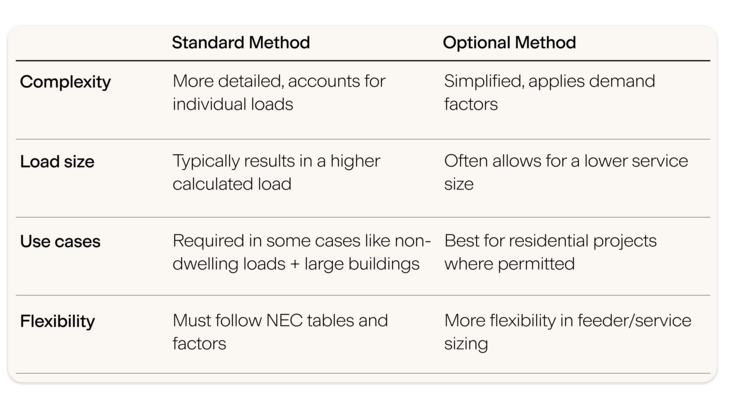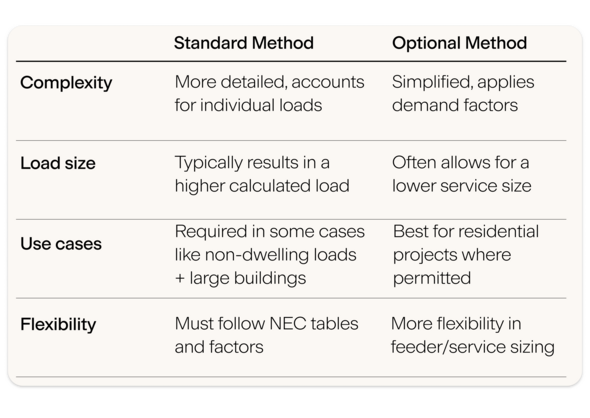When designing electrical systems, load calculations are essential. They help ensure both safety and compliance with the National Electrical Code (NEC). These calculations dictate feeder and service sizes, preventing overloading while optimizing efficiency. NEC Article 220 offers two distinct paths for how to complete load calculations: the Standard Method (Part III) and the Optional Method (Part IV).
Which should you use? Choosing the right approach isn’t just about code compliance — it’s about designing an electrical system that is both practical and cost-effective.
Understanding the Standard Method (NEC 220, Part III)
The Standard Method is a precise, step-by-step approach for load calculations outlined in NEC 220, Part III. It accounts for:
- General lighting and receptacle loads based on a dwelling's square footage
- Small appliance and laundry circuits
- Fixed appliance loads
- Heating and air-conditioning loads
- Application of demand factors as prescribed in NEC tables
Understanding the Optional Method (NEC 220, Part IV)
If a dwelling meets the conditions set forth in Part IV, either the Standard Method or the Optional Method may be used. It’s a best practice to run both calculations and select the one that yields the most favorable (often lower) number, while ensuring compliance.
A dwelling qualifies to use the Optional Method if it meets the following conditions:
- It is a single-family dwelling, a two-family dwelling, or a multifamily dwelling
- The electrical system is designed for single-phase service
- The total connected load includes all household loads, like lighting, receptacles, appliances, heating, cooling, and motors
Which method to use?


Kopperfield's load calculator: a tool for both methods
By comparing calculations, you can make more informed decisions, ensuring that every project is as accurate and economical as possible. Whether you need a Standard Method electrical load calculation or the Optional Method, our calculator lets you get the best of both options.
Try our electrical load calculator and start streamlining your electrical load calculations today.


